Articles
Three Ways We’re Changing the Self-Checkout Experience
It’s time to upend traditional self-checkout. The Shopic smart cart is the ultimate alternative. Find out why.
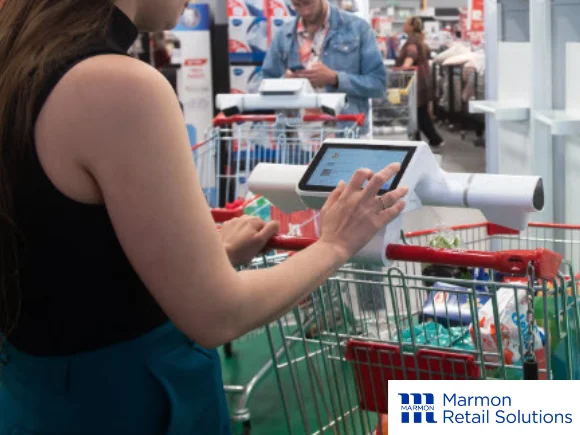
The self-checkout lane was once hailed as the future of grocery shopping. Its promise seemed simple enough: fewer employees, faster transactions, and happier shoppers. Unfortunately, after years of widespread use, the innovation has generally fallen short in generating the operational savings and customer satisfaction retailers expected.
Enter Shopic, a revolutionary clip-on device that transforms your existing shopping carts into smart carts and in the process actually delivers on the possibility of an ultra-efficient checkout experience.
In the following, we’ll examine three major problems with conventional self-checkouts AND describe how the Shopic alternative solves each of them.
1. Increased Shrinkage at the Self-Checkout Lane
With conventional self-checkouts, retailers must confront the reality of increased shrinkage. This can be caused by customer mistakes, computer errors, and outright theft from shoppers who find ways to circumvent or “trick” the self-checkout’s scanning and weighing system.
And with a busy store associate likely overseeing multiple self-checkouts, it’s easier for theft and other shrinkage-related events to go undetected.
In fact, the problem of theft in particular is more than a minor one. For example, Grocery Dive reports that data gathered from 2.5 million events across 10,000 grocery stores showed nearly 40% of all thefts occurred at self-checkout.
But should grocers just accept more shrinkage as the price for providing self-checkout lanes?
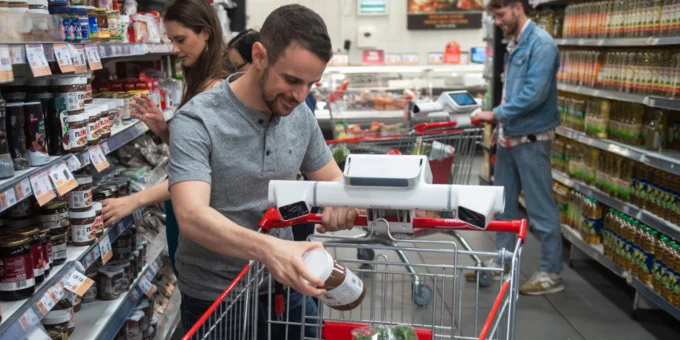
Shopic Reduces Shrinkage to Under .5%
The design of the Shopic device counters the potential for shrinkage head-on. More specifically, its advanced computer vision technology automatically detects—and tabulates—every item that enters or leaves the cart. Plus, it removes the need for associates to oversee each transaction.
According to Shopic’s CRO, Roger Bigio, “When you put an item in a cart using Shopic, it’s going to be charged. There is no way around it. And we’ve proven this with shrink margins that are less than .5%—when the market trends are 2% to 3% or higher.”
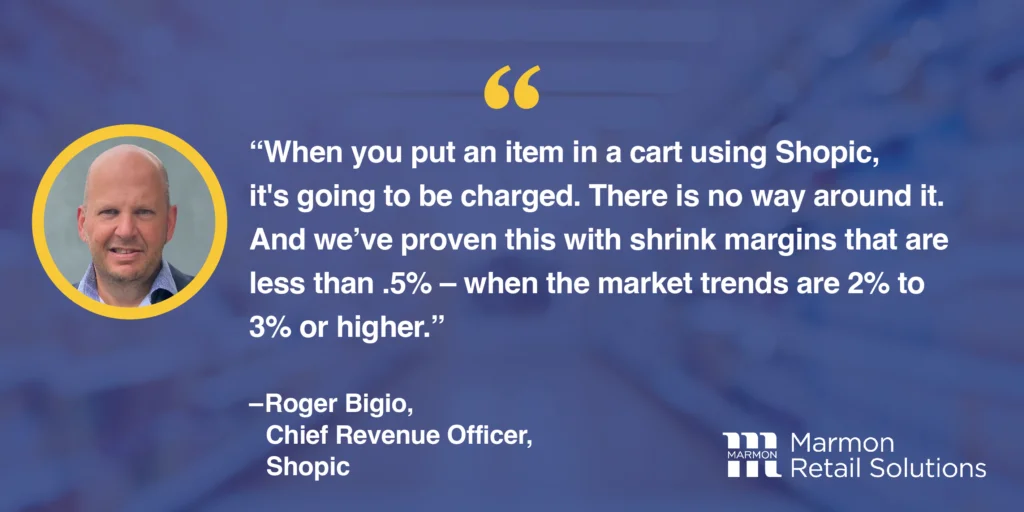
2. A Self-Checkout Experience Full of Friction
Despite the goal of creating a faster, easier shopping process for customers, self-checkout lanes can have the opposite effect. First, there’s the process itself, which can include scanning issues, confusion with entering product codes, and delays while waiting for associate help.
Meanwhile, those hoped-for speedy checkout lines can grow longer and longer. Obviously, that’s no great enticement considering how consumers associate waiting in line with “boredom, annoyance, frustration, and impatience,” according to a survey by Waitwhile.
And let’s not forget all the time and effort involved with conventional self-checkout. After shopping for items, customers must:
1) Wait in line to check out
2) Slowly unload and scan every item from their cart
3) Bag those items
4) Load the bags back into a cart
Now imagine how they would feel if they could avoid all four of those steps.
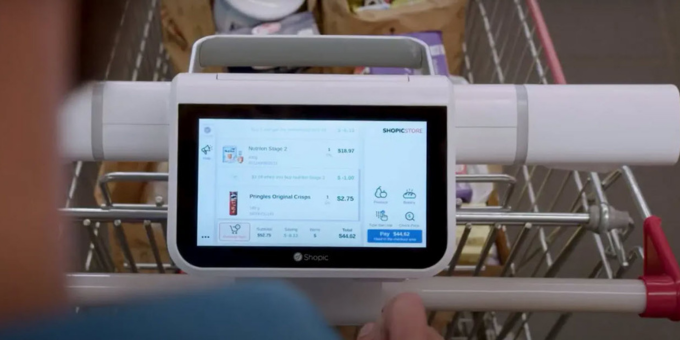
Shopic Lets Customers Check Out from their Cart
Shopic streamlines the checkout process. First, customers can place items directly into shopping bags while they shop. They also have the convenience of seeing an updated purchase total as new items are placed in the cart (or removed).
And when they’re done shopping, customers can check out directly from their Shopic-enabled cart with their phone, credit card, or debit card—skipping the lines entirely. That’s about as smooth and simple as in-store shopping gets.
(To learn about additional benefits of Shopic, like increasing shopper basket sizes, check out this video.)
3. Conventional Self-Checkout’s Expense and Square Footage
Self-checkout systems typically include a costly combination of touchscreen, weight sensor, and payment option technologies. They may also use additional security features to deter theft (see No. 1), which raises their price even higher.
Related costs also include machine repair and maintenance, in addition to continual investments in upgrades or replacements over time.
Another cost consideration? Valuable square footage. When you go all-in on adding or expanding self-checkout, what will the costs be for store additions, remodeling, and other modifications? And how much retail item space will be displaced by rows of new self-checkouts?
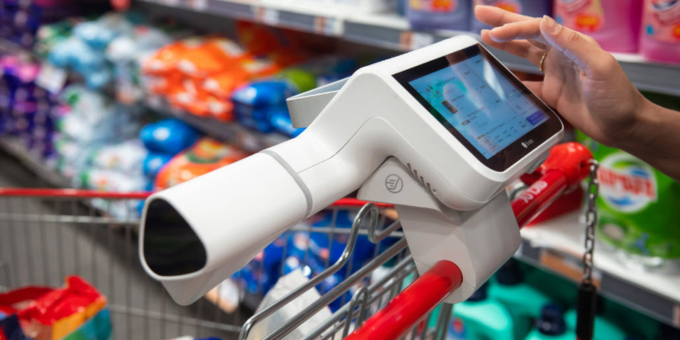
Shopic Minimizes Infrastructure Changes
Shopic uses clip-on digital devices and requires a low-footprint installation for storing and charging them. That means grocers can utilize existing infrastructure (namely, their shopping carts) and avoid large-scale physical modifications.
Moreover, Shopic’s plug-and-play setup is designed for seamless store integration, long-term durability, and simple maintenance that doesn’t require costly, specialized IT support.
(Learn more about how Shopic solves pain points for both grocers and customers in this blog post.)
Revolutionize Your Stores with the Shopic Alternative
Grocers do have a viable alternative to conventional self-checkout lanes. And with grocery store competition as intense as ever, this is the perfect time to innovate—and differentiate—with the Shopic solution.
Take the next step and schedule a Shopic demo today. Start your path to combating shrinkage more effectively, creating a better customer experience, and delivering on the promise of frictionless shopping.
See how Shopic solves challenges for both grocers and shoppers alike!